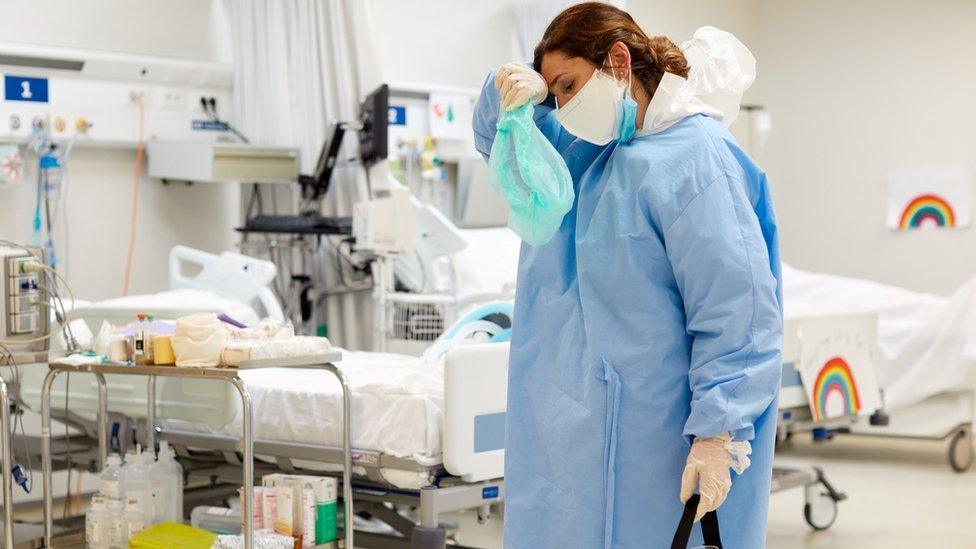Scottish Ambulance Service response times show improvement
- Published

The time it takes ambulances to reach patients in Scotland has improved, new figures show.
Before Christmas people were urged to consider whether they need an ambulance before calling 999, due the strain the service was facing.
Scottish Ambulance Service (SAS) data shows that every category of incident is being responded to more quickly.
Turnaround times for dropping patients at hospitals has also improved, the figures show.
Across Scotland, the median turnaround time on 26 December last year was 52 minutes. By 16 January it had dropped to 42 minutes.
Glasgow's Queen Elizabeth University Hospital (QEUH), which has had some of the longest turnaround times for offloading patients, is one facility showing improvement.
On 26 December, one in ten ambulances waited more than four hours at the flagship hospital. By 16 Jan, this wait time decreased to just over 90 minutes.
Response times in all category of calls have improved, the SAS data shows, external.
For example, the median time to respond to a "red" call, the second most serious category, across Scotland on Boxing Day last year was just over 10 minutes. But by 16 January this had dropped to eight minutes.
The total number of incidents attended by the SAS has dropped by just under 7% since Christmas.


Whenever I have been out with paramedics over the past couple of years it has been non-stop for the entire shift so it was a surprise last week, when shadowing a crew in Glasgow's east end, to find ourselves actually waiting for a call.
But sure enough, it didn't take long.
They were dispatched to a "yellow" call where the patient is thought to need care, but it is not life-threatening.
The crew say these are the patients who, in busy times, often wait hours and hours for an ambulance.
It can be really frustrating, they say, when they are just minutes away from helping an elderly patient who has spent the night lying on the floor, only to find themselves diverted to a more urgent call.
The latest SAS statistics indicate a slight improvement in response times and also delays handing over patients at hospital.
The ambulance services remains under significant pressure, but this means more ambulances on the road and more chance of getting to these patients who might not be critically ill, but still need help.
There are changes going on in how patients receive urgent care with the hope that ambulance crews can deliver more at home, avoiding the need to go to hospital.
But despite some respite over the last few weeks, the crew I was with say they don't expect it to last.

Related topics
- Published22 December 2022

- Published25 January 2023

- Published19 January 2023

